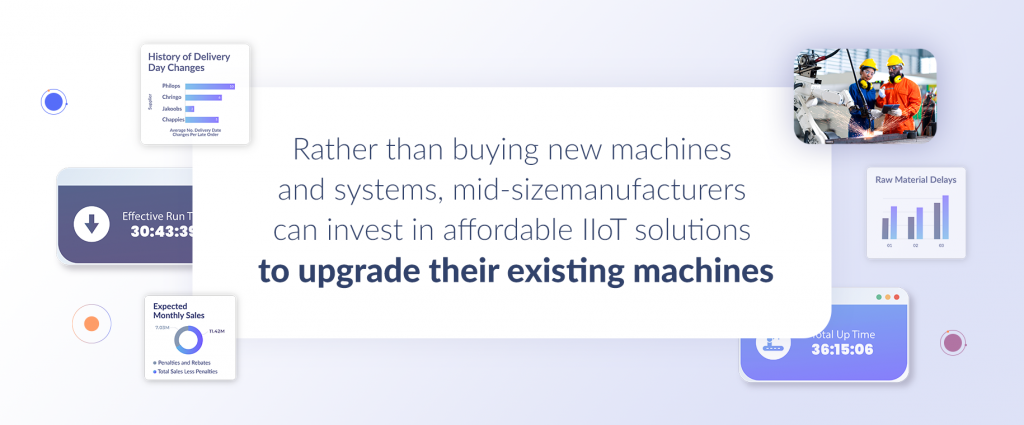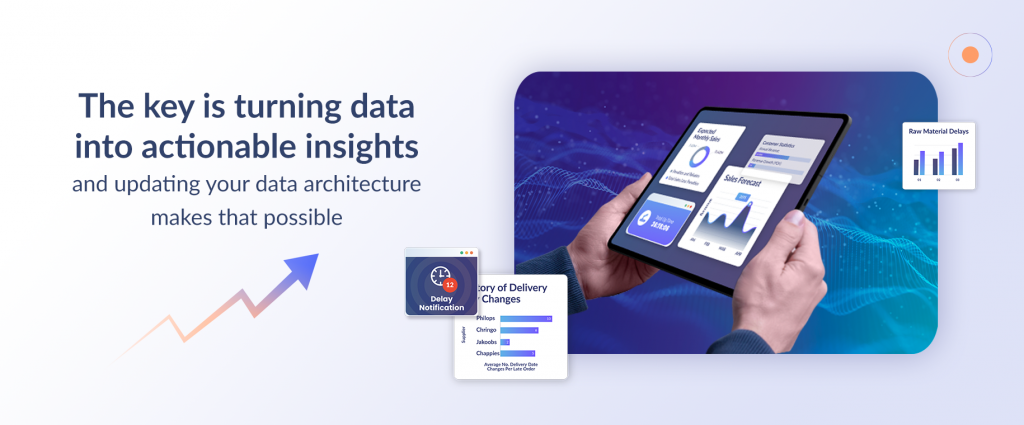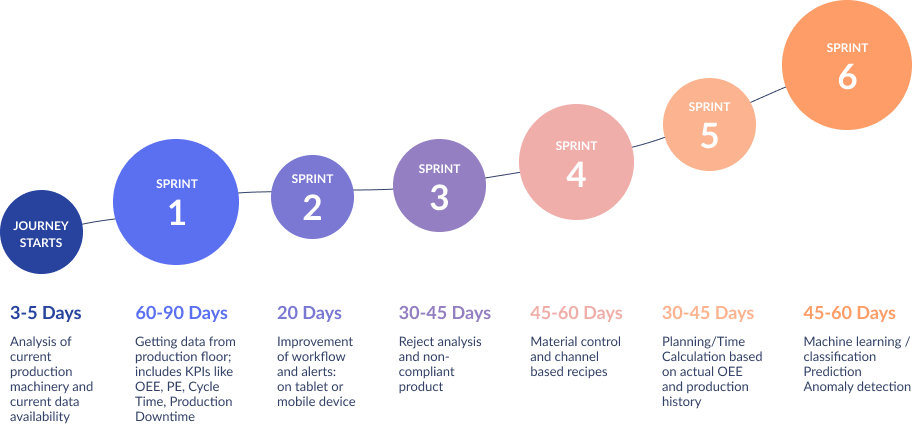Two of the most common concerns about adopting smart manufacturing are price and time. But underneath these two concerns, there is one that’s even more fundamental: a fear of change. Most mid-size manufacturers have factory floors filled with legacy machines, ERP, MES, and Excel systems, not to mention lots of clipboards that are decades old, and processes that haven’t changed since… well, seeing as older employees are retiring so fast, no one actually remembers.
For many, the motto is: why fix it if it isn’t broken?
Why? Many have seen trends come and go. They’ve seen companies invest in technologies that don’t pay off.
But now, manufacturers are increasingly realizing that while the old way of doing things might not be fully broken, something must change. As manufacturing returns to the US, mid-size manufacturers need more efficient processes to compete with cheaper overseas labor. And as Boomers retire, Gen Z expects the technology they grew up with to follow them to work.
To adapt to the new era of manufacturing, manufacturers need a clearer picture of what is happening across departments to make better decisions, and it sure would be nice if the reports all lined up for a change. Lowering scrap (or even knowing how much scrap they have) would help profits, and keeping machines from breaking would be a dream.
But some of this sounds too good to be true. And if making this a reality requires starting from scratch, learning new systems, buying new machines, or changing how they work, then most manufacturers aren’t willing to make the leap.
But here’s the good news: you can begin modernizing your factory by taking small steps. You can have the benefits and still have much of your old way of doing things. In other words, you can have your cake and eat it too.
In this blog, we’ll explore one easy change you can make to improve data collection: installing inexpensive IIoT devices. Then, we’ll expand on how to make the most out of this data collection.
Step 1: Turning legacy machines into next-generation data sources with IIoT
The problem with legacy machines is not that they don’t perform individual tasks well. It’s that they often act as islands, failing to communicate the data they collect, if any, with other systems and machines across the plant floor. The same is true for legacy software systems too. They’re fine on their own, but they’re lousy team players.
All the benefits of smart manufacturing, such as preventative maintenance, scrap reduction, quality improvement, and increased efficiency, rely on centralized data. One way of collecting all this data is buying new machines, but that’s not in the cards for most mid-size manufacturers.

Rather than buying new machines and systems, mid-size manufacturers can invest in affordable IIoT solutions to upgrade their existing machines. These IIoT solutions include sensors, scanners, thermometers, and more. By adding them to the machines you already have on the factory floor, you can begin collecting massive amounts of data.
However, collecting the data is only the first step. The next step in your modernization journey is centralizing this data. This will provide the visibility across departments and systems that you’ve been looking for, but to achieve it, you’ll need to explore modern data architecture.
Step 2: Data architecture turns data points into data stories
After installing IIoT sensors, you’ll begin collecting more data than ever. But now the question is, what do you do with it?
The key is turning data into actionable insights, and updating your data architecture makes that possible.
Modern data architecture turns siloes of unused data into pipelines of data-driven actionable insights. Imagine a corporate headquarters with multiple gleaming new buildings full of people, yet no streets or sidewalks connecting the buildings and no way for the employees to communicate with those outside their own building. The company would struggle to function.
Something similar is happening in manufacturing, except with data. Many manufacturers have brilliant data sources, but they are isolated from one another. Data architecture helps solve this by connecting disparate data sources—whether machines or software systems–contextualizing the data they collect, and using AI/ML-based data analysis techniques to find meaningful insights that were impossible to find without being connected to other data sources.

With the right data architecture, you can quickly analyze data from various sources. Better yet, you can tailor your analytics reports to an individual’s role. For instance, the CEO’s data dashboard can show cost reduction and ROI analytics. In contrast, a plant manager’s dashboard can show analytics on uptime and throughput, as well as alerts for preventative maintenance.
If this is sounding complicated, the bad news is, it is. The good news is, it’s not complicated for you. Our technology experts do all the heavy lifting for you, and then, since this architecture is cloud-based, outside experts handle much of the backend concerns, such as cybersecurity.
Conveniently, implementing a modern architecture doesn’t involve getting rid of your old systems, machines, or processes, so you can begin your modernization efforts without disrupting your operations or having to relearn processes.
The FactoryEye approach to smart manufacturing
We’re passionate about bringing smart manufacturing within reach of mid-size manufacturers. We prioritize minimizing disruptions to existing processes by allowing manufacturers to continue using their current machines. Then, we turn these machines into data sources with IIoT solutions and run this data through our cloud-based data lake architecture. Our data lake can collect data in all formats and export easy-to-understand reports based on individual needs.

To top it off, we phase our implementation into short sprints designed to help you see ROI (return on investment) as soon as possible while minimizing disruption for your team. Your team can keep working as usual and make small adjustments that create big impact based on the data. Then, the ROI from these adjustments in one sprint helps fund the next. This means you don’t have to take on long-term debt and hope the solution will pay for itself over a decade. Instead, you’ll get to see your investment pay for itself from the beginning without having to completely upend your operations.
If you want to learn more about how you can begin modernizing your factory, we’d love to talk to you, no strings attached. Contact us today!




